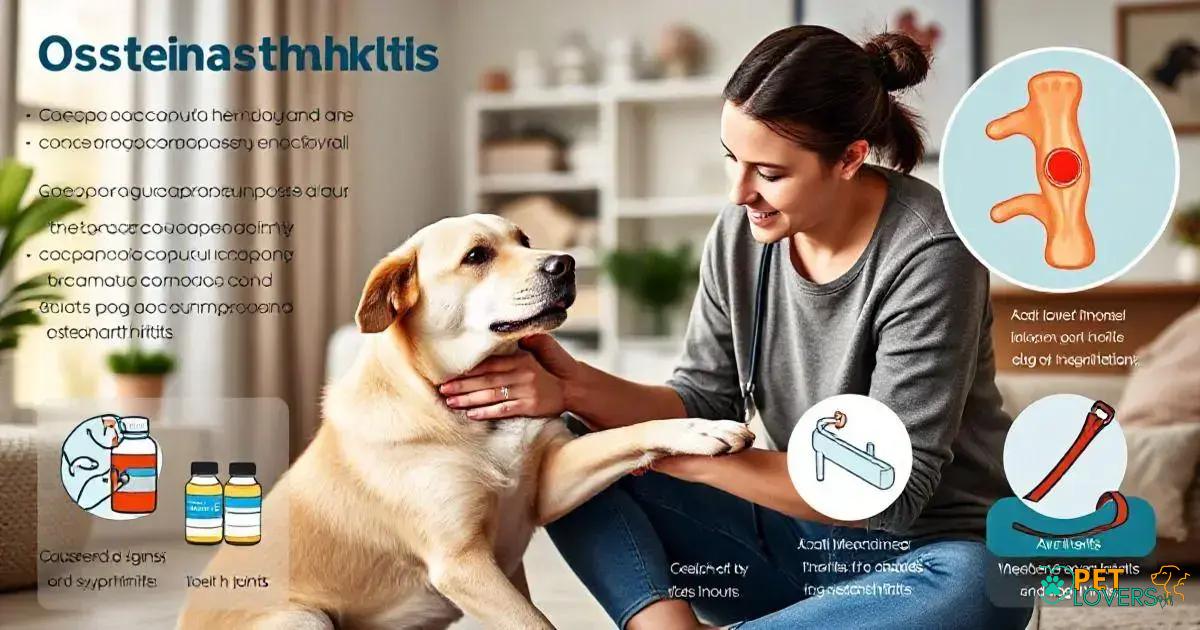Osteoarthritis in dogs: Is Your Furry Friend Suffering?
Osteoarthritis in dogs is a common condition that can cause significant discomfort and mobility issues for your furry friend.
As the leading cause of chronic pain in dogs, osteoarthritis can have a profound impact on their quality of life.
If you’re concerned about your dog’s joint health, it’s essential to understand the causes, symptoms, and treatment options for osteoarthritis.
In this article, we’ll delve into the world of canine osteoarthritis, exploring the latest research and providing valuable insights for dog owners.
Understanding Osteoarthritis in Dogs: Causes and Symptoms
Osteoarthritis in dogs is a degenerative joint disease caused by the wear and tear of the joints over time, often resulting from genetics, age, or previous injuries.
The condition can affect any joint in the dog’s body, but it’s most common in the hips, knees, and elbows.
The symptoms of osteoarthritis in dogs may include joint pain and stiffness, limited mobility, and changes in gait or posture.
As the condition progresses, it can lead to joint instability, muscle atrophy, and weight loss.
If left untreated, osteoarthritis can significantly impact a dog’s quality of life, making it essential to diagnose and manage the condition early on.
Diagnosing and Treating Osteoarthritis in Dogs

Diagnosing osteoarthritis in dogs typically involves a combination of physical examination, medical history, and imaging tests.
The veterinarian will assess the dog’s joint mobility, muscle tone, and overall condition, and may perform palpation to identify areas of pain or tenderness.
Radiographs (X-rays) or other imaging tests, such as CT or MRI scans, can help confirm the diagnosis and rule out other potential causes of joint pain.
Treatment options for osteoarthritis in dogs may include medications to manage pain and inflammation, physical therapy to improve mobility and strength, and lifestyle changes to reduce joint stress.
In some cases, surgery may be necessary to repair or replace damaged joint structures.
It’s essential to work closely with a veterinarian to develop an effective treatment plan that addresses the dog’s specific needs and improves their quality of life.
Managing Osteoarthritis in Dogs: Lifestyle Changes and Medication
Managing osteoarthritis in dogs requires a multi-faceted approach that combines lifestyle changes, medication, and in some cases, surgery.
Lifestyle changes can include providing a comfortable and supportive living environment, maintaining a healthy weight, and engaging in low-impact exercise.
Medications can help manage pain and inflammation, while physical therapy can improve joint mobility and strength.
In advanced cases, surgery may be necessary to repair or replace damaged joint structures.
It’s essential for dog owners to work closely with their veterinarian to develop a personalized treatment plan that addresses their dog’s specific needs and improves their quality of life.
By making informed decisions and taking proactive steps, dog owners can help manage their dog’s osteoarthritis and improve their overall health and well-being.
Conclusion
Osteoarthritis in dogs is a common condition that can significantly impact a dog’s quality of life.
By understanding the causes and symptoms, diagnosing and treating the condition, and implementing lifestyle changes and medication, dog owners can help manage their dog’s osteoarthritis and improve their overall health and well-being.
It’s essential for dog owners to work closely with their veterinarian to develop a personalized treatment plan that addresses their dog’s specific needs and improves their quality of life.
With the right approach, dog owners can help their dogs live a happy and comfortable life despite the challenges posed by osteoarthritis.
By being proactive and taking informed decisions, dog owners can help their dogs thrive and maintain a healthy and happy relationship with their furry friends.
Frequently Asked Questions about Osteoarthritis in Dogs
What are the common symptoms of osteoarthritis in dogs?
Common symptoms of osteoarthritis in dogs include joint pain and stiffness, limited mobility, and changes in gait or posture.
How is osteoarthritis diagnosed in dogs?
Osteoarthritis in dogs is typically diagnosed through a combination of physical examination, medical history, and imaging tests, such as radiographs (X-rays) or CT or MRI scans.
What are the treatment options for osteoarthritis in dogs?
Treatment options for osteoarthritis in dogs may include medications to manage pain and inflammation, physical therapy to improve mobility and strength, and lifestyle changes to reduce joint stress.
Can osteoarthritis be managed in dogs?
Yes, osteoarthritis in dogs can be managed with a combination of lifestyle changes, medication, and in some cases, surgery.
How can dog owners help manage their dog’s osteoarthritis?
Dog owners can help manage their dog’s osteoarthritis by working closely with their veterinarian to develop a personalized treatment plan, providing a comfortable and supportive living environment, and making lifestyle changes to reduce joint stress.
Is there a cure for osteoarthritis in dogs?
There is no cure for osteoarthritis in dogs, but it can be effectively managed with a combination of treatment options and lifestyle changes.





